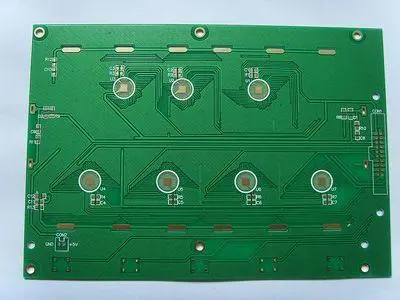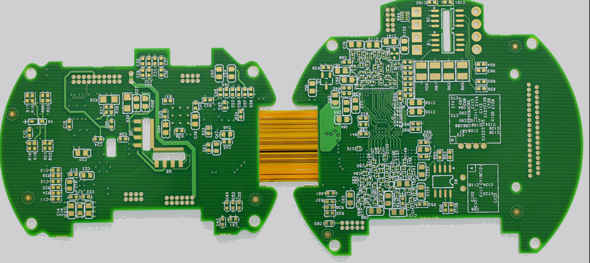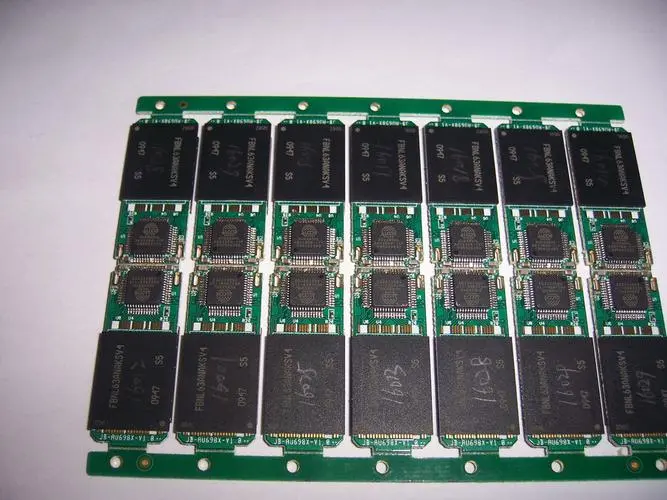
ChEMIcal copper is widely used in the production and processing of PCB with through-hole. The main purpose is to deposit copper layer on the non-conductive substrate by a series of chemICal treatment methods, and then thicken it by subsequent electroplating methods. The specific thickness to achieve the design is usually 1 mil (25.4 microns) or more, and sometimes even the copper thickness is deposited directly on the entire production line by chemical methods. The chemical copper process completes the deposition of chemical copper through a series of necessary steps, and each step is important to the entire PCB process flow.
Professional pcb design is not to detail the production process of pcb, but to highlight some key points related to chemical copper deposition in PCB production. As for those readers who want to know about PCB production and processing, it is recommended to refer to other articles, including the bibliography listed at the end of this chapter.
The concept of plated through hole (metallized hole) includes at least one or both of the following two meanings:
1. Forming a part of the PCB component conductor circuit;
2. Form inter layer interconnection lines or printed PCB lines;
Generally, a circuit board is produced and processed on a piece of non-conductive composite substrate (epoxy resin glass fiber cloth substrate, phenolic paper substrate, polyester glass fiber board, etc.) by etching (on the copper clad substrate) or electroless plating (on the copper clad substrate or copper foil substrate).
PI polyimide resin base material: used for the production of flexible panel (FPC), suitable for high temperature requirements;
Phenolic paper substrate: can be punched and processed, NEMA grade, common such as FR-2, XXX-PC;
Epoxy paper substrate: It has better mechanical properties than phenolic cardboard, NEMA grade, common such as CEM-1, FR-3;

Epoxy resin glass fiber board: glass fiber cloth is used as reinforcement inside, which has excellent mechanical properties, NEMA grade, common such as FR-4, FR-5, G-10, G-11;
Non woven glass fiber polyester substrate: suitable for some special purposes, NEMA grade, common such as FR-6;
Chemical copper/plated copper
The holes on the non-conductive substrate can achieve better solderability or both in interlayer interconnection or assembly after metallization. There may be inner layers of circuits inside the non-conductive substrate - circuits have been etched before the non-conductive substrate is laminated (laminated). The boards processed in this process are also calLED multilayer boards (MLB). In the Multilayer board, the metallized hole not only plays a role in connecting the two outer layers, but also plays a role in interconnecting the inner layers. If the hole is designed to pass through the non-conductive substrate (there is no concept of buried blind hole at present).
At present, raw rubbing and many circuit boards use laminated substrate blanking in their manufacturing process characteristics, that is, the outside of the non-conductive substrate is copper foil made by electrolytic method with a certain thickness of pressing. The thickness of copper foil is expressed by the weight (ounces) of copper foil per square foot. This expression method is converted into the thickness as shown in Table 13.1: these methods generally use fine abrasive such as glass beads or aluminum oxide abrasive materials. In the wet slurry process, nozzle guniting is used to treat holes. Some chemical materials are used to dissolve polymer resin in the etching and/or PCB processes. Common (such as epoxy resin system), concentrated sulfuric acid, Aqueous solutions of chromic acid have been used No matter which method is used, a good post-processing is required, otherwise it may cause many problems such as poor chemical copper deposition in the subsequent wet process perforation
Chromic acid method:
The existence of hexavalent chromium in the pores will cause many problems in the coverage of chemical copper in the pores. It will destroy the tin palladium colloid through the oxidation mechanism and hinder the reduction reaction of chemical copper. Pore breaking is a common result of this obstruction This situation can be solved by secondary activation, but the cost of rework or secondary activation is too high. Especially in automatic lines, the secondary activation process is not very mature
After chromic acid tank treatment, there is often a neutralization step. Generally, sodium bisulfite is used to reduce hexavalent chromium to trivalent chromium The temperature of neutralizer sodium bisulfite solution is generally about 100F, and the water washing temperature after neutralization is generally 120-150F. Sulfite can be cleaned to avoid other bath solutions brought into the process interfering with activation.
Concentrated sulfuric acid method:
After the tank solution is treated, it should be washed with very good water, preferably hot water, and try to avoid strong alkaline solution during washing Some sodium salt residues of epoxy resin sulfonate may be formed, which is difficult to clean and remove from the hole. Its presence will cause pollution in the hole, which may cause many electroplating difficulties
Other systems:
There are also some other chemical methods that can be used in the process of removing glue residue/drilling dirt and corrosion back. In these systems, the mixture of organic solvents (bulking/swelling resin) and potassium permanganate are used for treatment. Previously, they were also used in the post-treatment of concentrated sulfuric acid treatment, and now they even directly replace the concentrated sulfuric acid method/chromic acid method.
In addition, the plaSMA method is still in the experimental application stage, which is difficult to be used for large-scale production, and the equipment investment is large.
Electrochemical free copper process
Main purposes of pre-processing steps:
1. Ensure the continuity and integrity of the chemical copper deposition layer;
2. Guarantee the binding force between chemical copper and copper foil of base material;
3. Ensure the adhesion between chemical copper and inner copper foil
4. To ensure the binding force between the chemically deposited copper layer and the non-conductive substrate is a brief description of the pretreatment effect of chemical copper/electroless copper.
Typical pre-treatment steps of electrochemical free copper are described as follows:
1、 Degreasing
The purpose of degreasing: 1. Remove the oil stain and grease in the copper foil and hole; 2. Remove the copper foil and dirt in the hole; 3. It is helpful to remove contamination and subsequent heat treatment from the copper foil surface; 4. SIMply deal with the polymer resin drilling dirt generated from the drilling; 5. Remove the burr copper powder adsorbed in the hole caused by poor drilling; 6. Degreasing adjustment is in some pre-treatment lines, which is the first step of processing composite substrates (including copper foil and non-conductive substrates). Generally, the degreaser is alkaline, and some neutral and acidic raw materials are also used. Mainly in some atypical degreasing processes; Degreasing is a key tank fluid in the pretreatment line. The problem of chemical copper coverage (i.e. the generation of micro cavities and copper free areas) will be caused in the contaminated areas due to insufficient adsorption of the activator. The micro holes will be covered or bridged by subsequent electroplating copper, but there is no binding force between the copper layer and the base non-conductive substrate, and the final result may cause hole wall separation and hole blowing. The internal coating stress generated by the PCB electrodeposited coating deposited on the chemical copper layer and the steam expansion force generated by the water or gas wrapped in the coating in the substrate due to subsequent heating (baking, tin spraying, welding, etc.) tend to pull the coating away from the non-conductive substrate of the hole wall, which may cause the hole wall to separate; In the same way, if the copper powder generated by the burr tip in the hole is not removed during the oil removal process, it will also be covered by the electroplating copper layer. Similarly, there is no binding force between the copper layer and the non-conductive substrate, which may eventually lead to the hole wall separation.
Whether the above two results occur or not, there is no denying that the binding force at this place is significantly worse and the thermal stress at this place is significantly increased, which may damage the continuity of the electrodeposit, especially during PCB welding or wave welding, resulting in the generation of blowholes. Blowing is actually caused by the steam generated from the non-conductive substrate under the coating with weak adhesion due to thermal expansion! If our electroless copper is deposited on the dirt of the copper foil of the base material or on the contamination of the copper foil ring in the inner layer of the multilayer board, the bonding force between the electroless copper and the copper foil of the base will be much worse than that between the well cleaned copper foils. The poor bonding may result in: if the oil stain is in the form of a dot, it may cause blistering,; If the dirt area is large, it may even cause the separation of the non electric copper;
Important factors in oil removal process:
1. How to select appropriate degreaser - type of cleaning/degreaser
2. Operating temperature of degreaser
3. Concentration of degreaser
4. Soaking time of degreaser
5. Mechanical mixing in the oil removal tank;
6. Cleaning points where the cleaning effect of degreaser decreases;
7. Water washing effect after degreasing;
In the above cleaning operations, temperature is a key factor that deserves attention. Many degreasers have a minimum temperature limit, and the cleaning and degreasing effect drops sharply below this temperature!
Influential factors of water washing:
1. The washing temperature should be above 60F;
2. Air agitation;
3. It is better to have spraying;
4. There is enough fresh water for the whole water washing, and it shall be replaced in time.
The water washing after the oil removal tank is as important as the oil removal itself in a sense. The residual oil remover on the board surface and hole wall itself will also become a pollutant on the circuit board, and then pollute other subsequent major treatment solutions, such as micro etching and activation. Generally, the most typical water washing is as follows:
a. The water temperature is above 60F,
b. Air agitation;
c. When a nozzle is equipped in the tank, the plate surface is flushed with fresh water during washing;
Condition c is not often used, but two items ab are required; The water flow of cleaning water depends on the following factors: 1. The amount of waste liquid carried out (ml/hang); 2. Working plate load in the water washing tank; 3. Number of water washing tanks (countercurrent rinsing)
2、 PCB charge adjustment or hole completion:
The charge adjustment process is typically adopted after oil removal. Generally, in the production of some special plates and multilayer plates, the charge adjustment treatment is required after the process of glue removal slag pitting due to the charge factor of the resin itself; The important role of adjustment is to "super soak" the non-conductive substrate. In other words, it is to denature the resin surface with weak negative charge to the active surface with weak positive charge after treatment with the adjustment solution. In some cases, it can provide a uniform and continuous positive charge polar surface, which can ensure that the subsequent activator can be effectively and fully adsorbed on the pore wall. Sometimes the adjusted drugs will be added to the degreasing agent, which is also called the degreasing adjusting fluid. Although the effect of the separate degreasing fluid and the adjusting fluid is better than that of the combined degreasing adjusting fluid, the industry trend has combined the two into one, and the adjusting agent is actually some surfactants. The adjusted water washing is extremely important. If the water washing is not sufficient, the surfactant will remain on the copper surface of the plate, contaminating the subsequent micro etching and activation solution, which may affect the final adhesion between copper and copper, thus reducing the adhesion between chemical copper and base copper. The temperature of cleaning water and the flow rate of effective cleaning water should be noted here. Special attention should be paid to the concentration of the regulator. The use of the regulator with too high concentration should be avoided. An appropriate amount of the regulator will play a more obvious role. III The next step of pretreatment for micro etching electroless copper deposition is micro etching or micro etching or micro roughening or coarsening. The purpose of this step is to provide a micro rough active copper surface structure for subsequent electroless copper deposition. If there is no micro etching step, the adhesion between chemical copper and base copper will be greatly reduced; The roughened surface can play the following roles:
1. The surface area and surface energy of copper foil are greatly increased, providing a large contact area between chemical copper and base copper;
2. If some surfactants are not cleaned during water washing, the micro etchant can remove the surfactant on the substrate surface by etching the copper base on the copper surface of its PCB substrate. However, it is not realistic and effective to remove the surfactant completely by relying on the micro etchant, because when the residual copper surface area of the surfactant is large, the opportunity to allow the micro etchant to act is small, The copper surface where a large amount of surfactant remains is often not micro etched.









